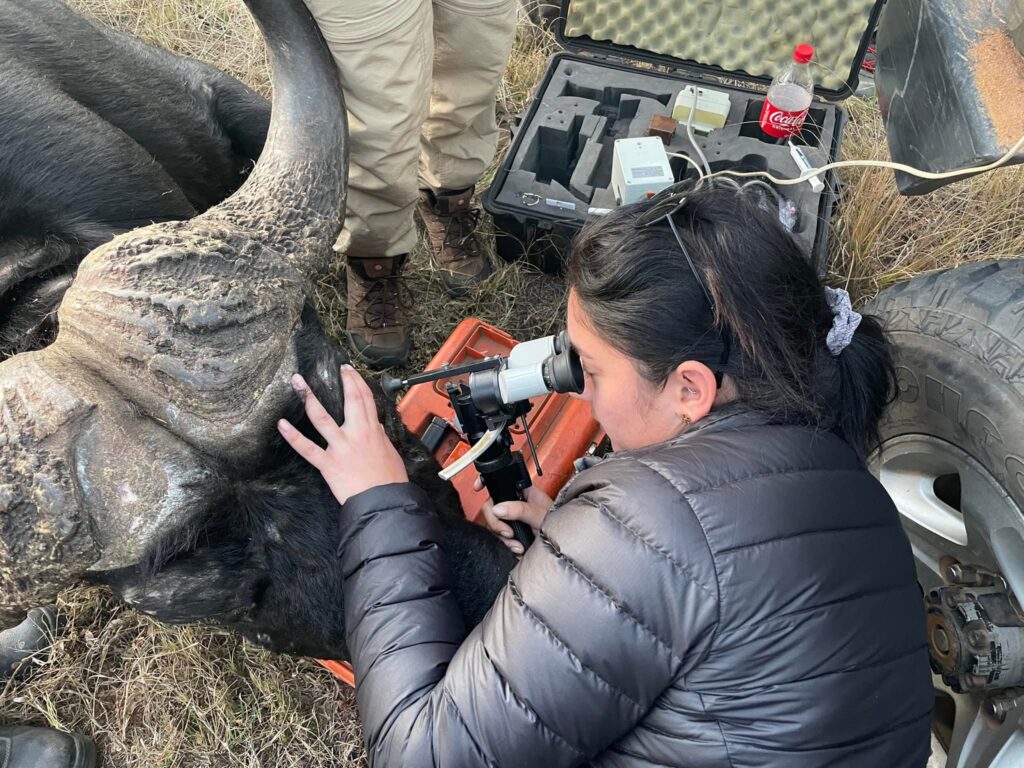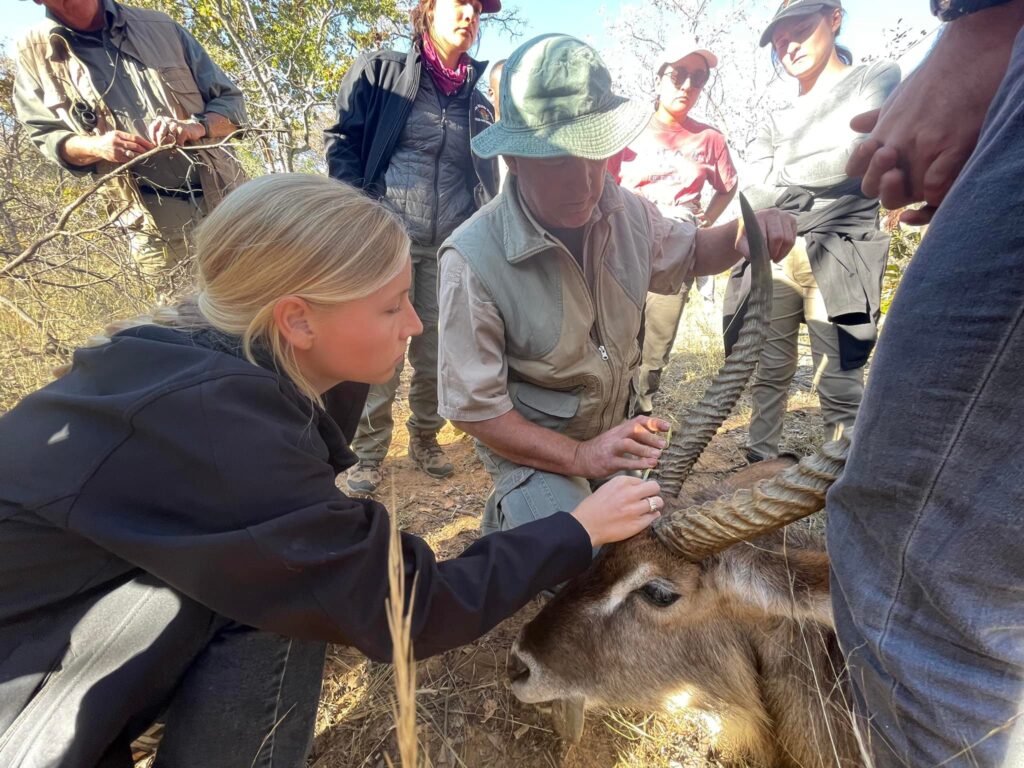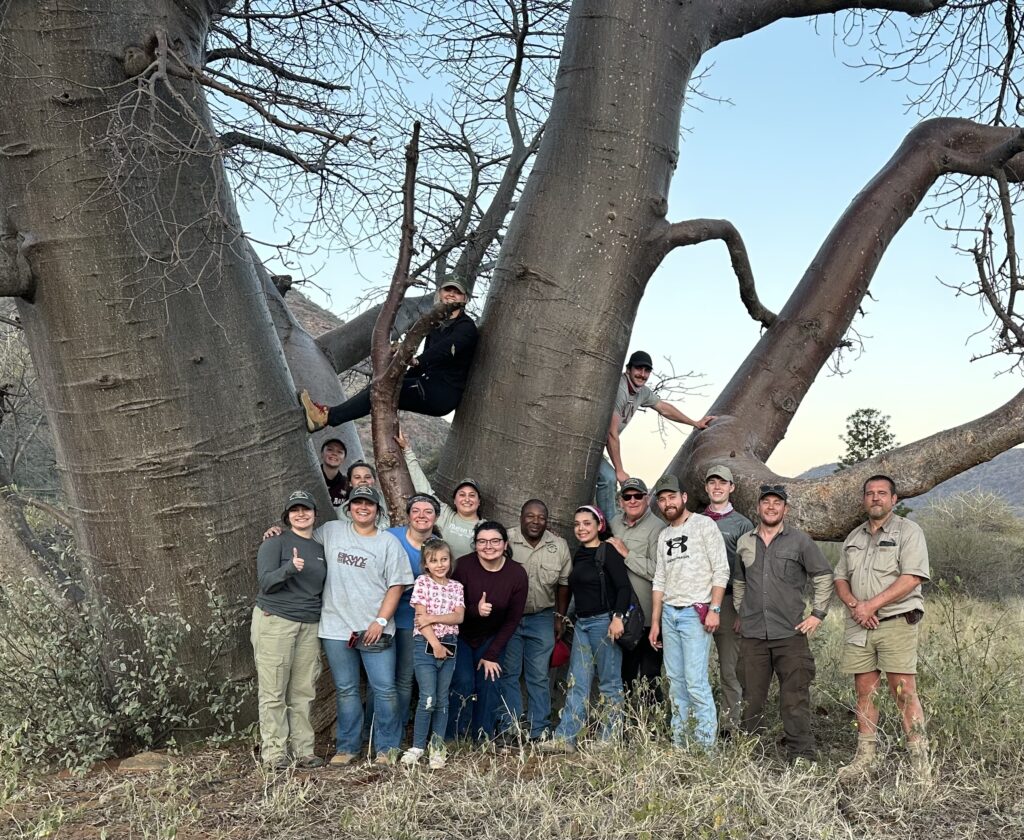Texas A&M Education Abroad Course Offers Hands-On Experiences In African Wildlife Medicine

Texas A&M University undergraduates and veterinary students have the unique opportunity to learn about wildlife medicine and gain hands-on experience during a summer education abroad course led by Drs. James Derr and Walter Cook, faculty members in the Texas A&M School of Veterinary Medicine & Biomedical Sciences.
The two-and-a-half-week “African Wildlife Medicine” course in the Republic of South Africa gives students the rare opportunity to learn from world-class wildlife veterinary professionals while also gaining firsthand, in-the-field wildlife veterinary medicine experience.
“Without question, we all want healthy and thriving wildlife populations,” Derr said. “Identifying and treating infectious diseases, rendering medical care, and intervening with preventative medicine practices are all important skills required of professional wildlife veterinarians and caregivers. In addition, ethical game capture and safe restraint technologies using chemical or physical immobilization are the hallmarks of modern wildlife veterinary medicine.”
As the largest program of its kind in the United States, the course has given more than 100 students over the past ten years the chance to learn these skills and more in the beautiful Limpopo province.
Putting Knowledge Into Practice
Each summer, two sections of the course, with 12 students each, travel to South Africa for 19 days of field capturing, treating, and transporting both dangerous and plains game species, including the African Big Five — cape buffalo, elephants, lions, leopards, and both black and white rhinoceros (black and white).

The course curriculum involves a minimum of 20 hours of instruction and 80 hours of practical direct experience in wildlife physiology, pathology, capture pharmacology, safe capture procedures, wildlife transportation, and helicopter safety.
The students learn to safely capture and transport animals; treat wounds and parasites; administer vaccines; place satellite and radio transmitters; assist with conservation efforts; and more.
“This course is designed to push students out of their comfort zones both mentally and physically,” Derr said. “Days start long before daylight and involve hands-on activities with multiple species. For example, in 2023, we had a local wildlife official lecture on the snakes of southern Africa, with some very healthy ‘show and tell’ examples, and we were also lucky enough to witness a feeding pack of endangered African wild dogs.”
Each summer, Derr and Cook partner with up to five of Africa’s most accomplished and experienced wildlife veterinarians who specialize in various aspects of game capture, disease diagnostics, animal transportation, and herd health.
“Collaborating with these South African veterinarians and game capture teams, our students gain a much broader perspective of how these animals are managed in their native habitats,” Derr said. “Upon completion of this course, students return to the U.S. with newly developed skills and insights to apply to exotic wildlife health and sustainability issues across Texas.”
A Once-In-A-Lifetime Experience

While the course is focused on teaching wildlife medicine, students also have opportunities to learn about South African culture at destinations like the Lesedi Cultural Village, the Cradle of Humankind, and the Apartheid Museum.
After two days in Johannesburg, the group travels to Seringa Ranch, owned by Dr. Jim Myers ’62, which serves as a home base for the majority of the trip. Students experience warm hospitality, gourmet chef-prepared meals, an impressive central lodge to gather, and luxurious accommodations.
“After intensive days of chasing wildlife, we indulge in a ‘South African Sundowner,’ reflecting on the day’s events around a campfire while watching the sun set across the vast valley on the backside of the ranch,” Derr said.
The course is unique to the university in that it brings together first- and second-year veterinary students and exceptionally high-achieving junior- and senior-level undergraduate students.
It is also highly competitive, with admission based on academic standing, a demonstrated interest in wildlife veterinary medicine, and a compelling application essay outlining how this opportunity can positively impact their veterinary medicine career. Thanks to the Houston Safari Club Foundation, many students receive scholarships to help cover the course fee.
“As I explain to the students in pre-departure meetings, this is a serious course and unlike any university course they may have experienced in the past,” Derr said. “We are going halfway around the world to use the most powerful drugs known to humankind to capture the most dangerous wildlife species in Africa. At the end of each day in the African bush, you will be tired, smell like the species we worked with that day, and very likely have mud and dung on you, but you will also have experiences that will be relived for a lifetime.”
This piece is adapted from an article Derr wrote about the African Wildlife Medicine course for the Spring 2024 issue of Houston Safari Club Foundation Hunter’s Horn magazine.
###
For more information about the Texas A&M College of Veterinary Medicine & Biomedical Sciences, please visit our website at vetmed.tamu.edu or join us on Facebook, Instagram, and Twitter.
Contact Information: Jennifer Gauntt, Director of VMBS Communications, Texas A&M College of Veterinary Medicine & Biomedical Sciences, jgauntt@cvm.tamu.edu, 979-862-4216


